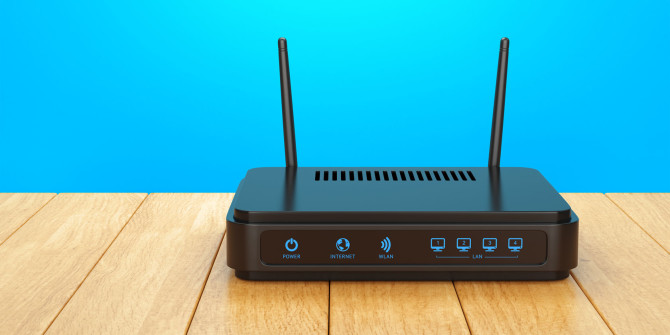Home Appliances That Affect The WiFi Speed
By Muhammad YaseenPublished On 05 Jan 2023


Before you call your Internet service provider, or run out and buy a new computer, there are some more obvious issues to be examined. You may be surprised to know that there are many everyday objects that can interfere with the strength of your Wi-Fi signal.
These are items that are found in many homes. Knowing what these common objects are, and how to fix or minimise their Internet impact, means plentiful, solid Wi-Fi for all.
Thick Walls
Thick walls can pose a problem for wireless networks. Unfortunately, you can’t do much about the construction of your existing home, but you can plan ahead and position your router in an optimal spot.
What type of walls should you avoid?
Overly thick walls can be problematic, but especially those containing insulation material, water pipes, and air ducts. In addition to the wall material itself, these create additional obstacles to stymie your Wi-Fi signal.
Troublesome materials include concrete, metal, brick, stone, ceramic, and mirrors.
Thinner partitions, such as those made of Gyprock, tend to be better for your signal. Placement of your router will be paramount to making the most of your residential situation, but if you’re still experiencing issues, you may want to try a Wi-Fi repeater which can expand your signal reach and multiply its strength. If all else fails, a wired connection may be your best bet for reliable Internet access.
Microwaves/TVs
When space is limited, you might find that the easiest place for your router is next to your television or microwave. But this is definitely not the best location from a signal standpoint. Appliances such as microwaves and TVs can be the cause of weak Wi-Fi.
Microwaves, like many other household appliances, operate on a similar frequency to Wi-Fi networks, which means that a tiny leak of radiation from the appliance can interfere with the signal. Moving your router further from your microwave can usually make a difference.
Other appliances which can create interferences include TVs, baby monitors, refrigerators, game console controllers, and wireless speakers. Placement of the items can help, but another option is to physically change your Wi-Fi channel. Many routers allow for this possibility.
Metallic Objects/Surfaces
A beautiful wall mirror is a lovely addition to your home, but what if it’s affecting your Wi-Fi power? Not all mirrors will cause issues, but some do. The culprit is the metal backing on the mirror which reflects---or deflects---your Wi-Fi signal, weakening and limiting it.
The larger the mirror, and the closer its position to your router, the more interference it is likely to create. If you’re experiencing ‘dead zones’ in your home where the Wi-Fi does not reach, it could be the fault of one or more mirrors.
Energy Efficient Windows
Energy-saving windows are a smart move for minimising energy usage and keeping your home’s climate steady, but these windows can actually be an enemy to Wi-Fi. That’s because these windows may include low-emissivity (low-E) coatings, very thin transparent metal.
As we know, metal is counterproductive to Wi-Fi transmission, so these energy-efficient windows can be a problem, too. In this situation, moving your router away from your windows is a smart solution. Metallic blinds can create a similar issue.
What about fairy lights?
A few years ago, a popular rumour spread that fairy lights would hurt your Wi-Fi signal. These festive stringed lights, hung mostly around Christmas time, are a fun addition to your decor.
But will they slow down your wireless signal? There’s only a bit of truth to the rumour. The visible light from your fairy lights won’t trouble your Wi-Fi, as the two object don’t operate on the same frequency. But there could be some blocking the electromagnetic radiation from the wires or LED electronics.
While you might not want to bury your router behind this year’s Christmas tree, chances are you have very little to fear from your fairy lights.









